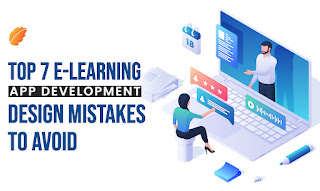The Era of Low-Code Development for Mobile Apps
Are you looking to build a mobile app for your business but don't have the time or budget for a lengthy mobile app design and development process? You're not alone! Many businesses today need mobile apps to engage customers and drive growth. But custom mobile app development services can be time-consuming and expensive.
That's where low-code development comes in! Low-code platforms allow you to quickly build mobile apps by dragging and dropping pre-built components instead of hand-coding everything.
This blog delves into this game-changing approach, offering valuable insights into its role, advantages, challenges. Furthermore, we will explore the leading low-code development platforms in the market this 2023.
What is Low-Code Development and Why is it Important?
Understanding the Concept of Low-Code Development
Low-code development refers to platforms that enable mobile and web app development faster with minimal coding. According to study, the low-code market is growing at a whopping 45% annually and will be worth $187 billion by 2030.
With low-code platforms like Appian and Grow, you simply drag and drop different elements like forms, charts, workflows etc. to create a working app. The platform handles the complex coding in the background. This means you can build and iterate apps much quicker without writing thousands of lines of code.
The Rising Dominance of Low-Code in Application Development
The advancement and ease offered by a low-code development platform are pivotal in the rising dominance of low-code in application development. With businesses needing to create mobile applications rapidly to meet development needs, low-code mobile and web app development has become a preferred alternative, enabling development teams to expedite the app development process drastically.
Key Benefits of Using Low-Code Platforms
Here are some of the main reasons businesses are adopting low-code platforms for mobile and web app development:
Faster App Development
Low-code platforms can help build apps 10x faster than traditional coding. Instead of developing from scratch, you assemble ready app components configured to your needs. This means you can create and deploy MVP apps in just weeks or months.
Lower Cost
With low-code, you don't need large developer teams that directly add to costs. Low-code platforms abstract away much of the complex backend coding. This means you save significantly on developer costs and resources.
Easier Maintenance
Updating and maintaining apps is also easier. With traditional coding, any updates mean code changes across the app. With low-code, you can update apps by simply modifying configurations rather than code. This makes post-launch maintenance simpler.
Integration and Scalability
Reputable low-code platforms also ensure your apps can integrate well with existing systems. They provide enterprise-grade scalability to build apps that can manage thousands of users.
So in summary, low-code platforms radically transform mobile and web app development by making it faster, affordable and easier!
When Should Businesses Consider Using Low-Code?
Here are some common scenarios where low-code makes sense for mobile and web app development:
- Building quick prototypes and MVP versions of new app ideas
- Creating simple customer-facing apps like ordering or account management apps
- Developing internal business apps for workflows, reporting etc.
- Empowering non-developer teams (business users, marketing etc.) to build their own apps
- Developing apps where speed and agility is critical - eg. during emergencies or quickly testing new ideas
Low-code may not be ideal for highly complex apps that need access to advanced device features or specialized APIs. But it works great for a majority of basic to medium complexity apps businesses need.
Examples of Impactful Apps Built With Low-Code
Many innovative apps across industries are being built rapidly using low-code platforms.
Here are a few examples:
- Retail - Lowes Foods built an app to enable curbside pickup orders. It was rolled out in just 2 weeks with low-code!
- Healthcare - AcceleratXR built a patient education app with low-code in just 3 months instead of 6-9 months.
- Finance - Austria's largest bank Erste Bank built a customer-facing finance tracking app with low-code in just 5 months.
These examples highlight the real-world impact low-code is driving across domains by accelerating mobile app design and development.
Comparison: Low-Code vs No-Code Platforms
Defining No-Code and Low-Code Platforms
While low-code platforms require some code knowledge, providing developers with flexibility and control, no-code platforms are entirely visual and require no prior coding expertise. No code platforms are often the choice of business users and offer a code-free approach to application development.
Low Code Vs No Code: Which is Better for Mobile App Development?
Choosing between low code and no code platforms often depends on the complexity and functionality required in a mobile application. While no-code platforms can provide quick solutions for simple applications, low-code platforms are generally preferred when there's a need for more customized and complex mobile applications.
Conclusion;
The Future is Low-Code
Low-code development makes mobile and web app development faster, affordable and accessible. It allows businesses to experiment and innovate quickly to drive digital engagement. According to Gartner, over 65% of all app dev will be low-code.
So if you need to build apps rapidly that deliver great user experiences, it's time to seriously evaluate leading low-code platforms. They provide a compelling way to stay competitive and meet ever-evolving customer expectations. The era of low-code is here - are you ready to leap ahead?
To explore how low-code can transform app dev for your business, get in touch with us at Consagous Technologies - a premium Mobile App Development company specializing in fast, innovative low-code mobile applications.

Comments
Post a Comment